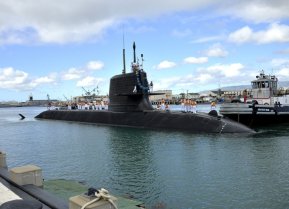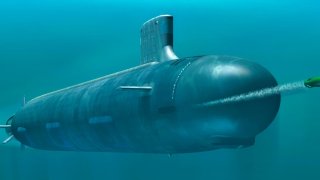Are Submarines Becoming Obsolete?
Ultimately, submarines are still a relevant player in modern navies. There will doubtless be tactical changes as new technologies come online, but that is true of any military equipment.
Are Submarines Becoming Obsolete Like Old Battleships from the 20th Century? In September 2021, the US, UK, and Australia announced a trilateral defense partnership. Brokered to increase military cooperation between the three nations, particularly to counter rising Chinese influence in the Indo-Pacific, a major component of the deal is the supply of US nuclear submarine technology to Australia.
The $245 billion deal sparked a lively debate in the Australian defense establishment aimed at whether or not the new submarines would be obsolete by the time they became operational in the 2040s to ‘50s. Despite advances across multiple domains of technology, nuclear submarines will remain a lynchpin of naval services in the upcoming decades.
The Likely Threat to Submarines
Currently, U.S. nuclear-powered submarines are the quietest in the world. That makes finding and tracking them an incredibly difficult challenge.
In order to do so, there will most likely need to be a paradigm shift away from underwater listening nets and lone attack submarines trailing each other. Emerging developments in drone technology may pave the way for increasing the ability of adversaries to detect submarines.
One of the biggest challenges of the ocean is simply its size. When confronted with its vast reaches, navies must decide where to focus their sub-tracking efforts. To date, Western nations have enjoyed a significant geographical advantage as countries such as Russia and China must send their subs through narrow, easily controlled chokepoints to go on patrol. The reverse is not true, but rather than search for a needle in a haystack, adversaries could deploy a large fleet of small, unmanned submersibles to act as tripwires for sensing a submarine.
This concept, combined with other novel ideas, has begun driving the idea of “transparent oceans” that is, an ocean where no sub can hide.
Transparent Oceans Meaning Subs are Obsolete?
Detractors of the deal point in particular to a study carried out by four researchers which focused on emerging threats to submarine technology. They concluded with some degree of certainty that the oceans would be “transparent” by 2050. According to them, “developments in artificial intelligence, sensor technology and underwater communication” will render subs visible no matter where they are.
The essence of their argument is that advanced nations will be able to build and field a “dense, adaptive, sensing mesh” made up of a combination of satellites, manned and unmanned aerial assets, and manned and unmanned undersea assets which, coupled with a complete understanding of subsurface geography will turn the oceans transparent.
While the study’s methodology is sound, it relies entirely on assumptions about advances in science and technology in certain areas it identifies as having a key role in establishing this sensor mesh.
Indeed, the authors do an admirable job of assigning likelihoods of advancement in, say, battery technology based on current discourse.
Still, assumptions are just that.
And when it comes to science and tech, time and again, new innovations have been more than expected or not panned out at all.
In addition, the study fails to address any vulnerabilities such a system might have. Surely nations are aware of the threat posed by a distributed network of undersea unmanned vehicles and are actively working to counter said threat. There is no discussion of how such emerging technologies might be used against each other to disrupt the overall sensor net. This is where the vast size of the oceans comes into play. All it takes is for a sub to slip past an initial sensor; traveling at 20 knots, in six hours an adversary would have to search an area more than 45,000 square nautical miles to find the sub.
Submarines are Still Relevant
Ultimately, submarines are still a relevant player in modern navies. There will doubtless be tactical changes as new technologies come online, but that is true of any military equipment. It is doubtful that a single technology, or even several acting in concert, will render submarines completely obsolete in the coming decades.
Granted, the role of attack submarines may change as convoys and fleets harden their defenses further with distributed networks of drones, pushing their sensor range past where a sub can employ its torpedoes.
Ballistic missile subs, however, one of the primary deterrents of the U.S. and Western nations, appear poised to continue with business as usual.
About the Author
Maya Carlin is an analyst with the Center for Security Policy and a former Anna Sobol Levy Fellow at IDC Herzliya in Israel. She has by-lines in many publications, including The National Interest, Jerusalem Post, and Times of Israel. You can follow her on Twitter: @MayaCarlin.


